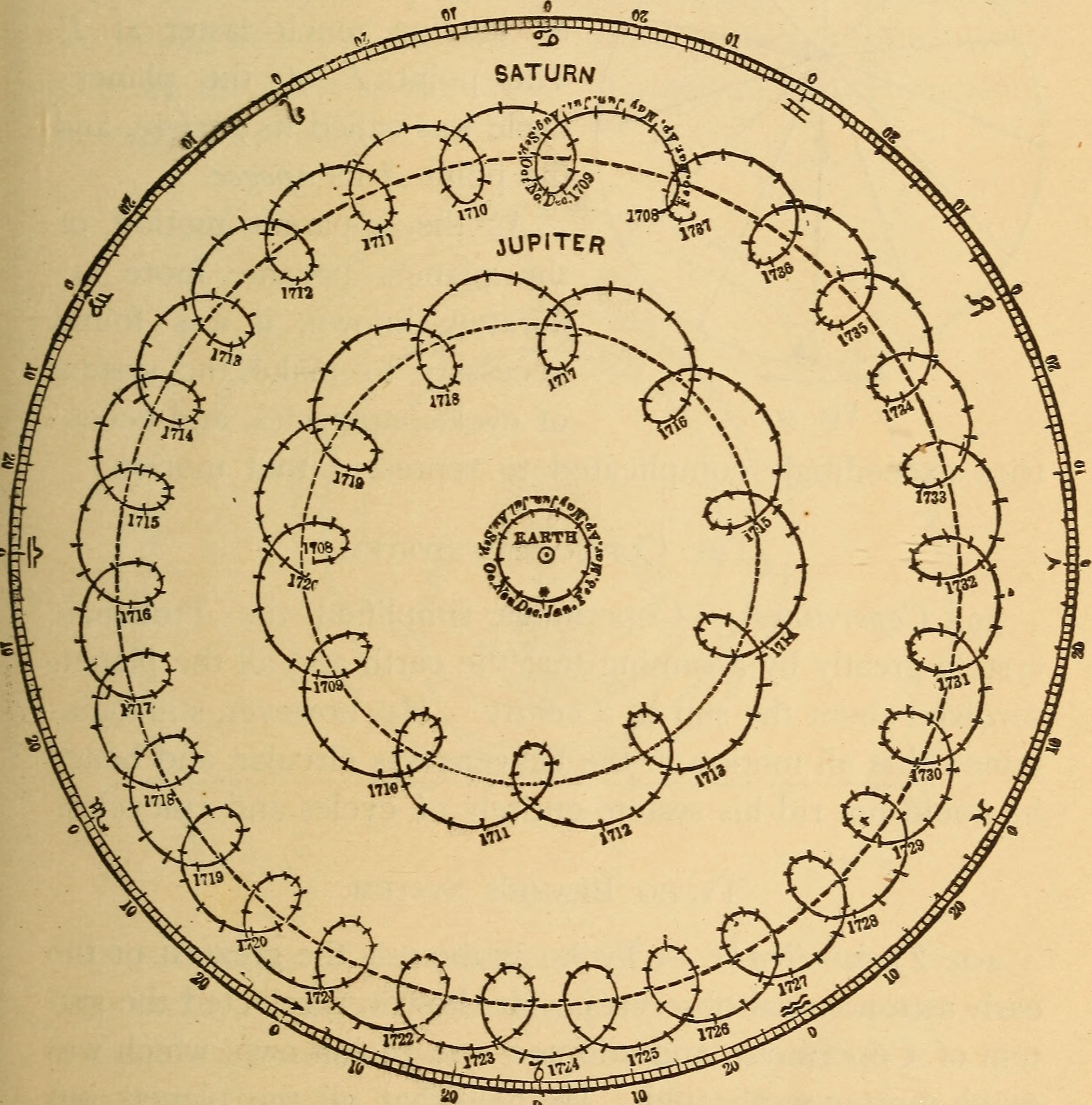KISS-Prinzip
Bildinfo und Lizenz
Bildinfo
- Man sieht als äußere Bahn den Planeten Saturn vom Jahr 1708 bis ins Jahr 1737 nach der Epizyklentheorie. In der Mitte liegt die Erde. Sehr viel einfacher ist die Annahme der Sonne in der Bahnmitte und von Ellipsenbahnen um diese Mitte.
- Originalbeschriftung: Fig. 49- The ancients assumed that the planets moved in exact circles, and, in fact, that all motion in the heavens was circular, the circle being the simplest and most perfect curve. To account for the loops described by the planets,they imagined that each planet revolved in a circle around acentre, which, in turn, revolved in a circle around the earth. The circle described by this centre around the earth they called the cycle, and the circle described by the planet around this centre they called the epicycle.
- The Eccentric. — The ancients assumed that theplanets moved at a uniform rate in describing the epicycle,and also the centre in describing the cycle. They had, however, discovered that the planets advance eastward morerapidly in some parts of their orbits than in others. Fig. 5°- account for this they assumed that the cycles described by the centre, around which the planets revolved, were eccentric ; that is to say. that the earth was not at the centre of the cycle, but some distance away from it. as shownin Fig. 51. E is the position of the earth...
Source
- Created: 1882
- Author:
License
Public Domain: Jebulon grants all rights on Wikimedia Commons: I, the copyright holder of this work, hereby publish it under the following license: This file is made available under the Creative Commons CC0 1.0 Universal Public Domain Dedication. The person who associated a work with this deed has dedicated the work to the public domain by waiving all of their rights to the work worldwide under copyright law, including all related and neighboring rights, to the extent allowed by law. You can copy, modify, distribute and perform the work, even for commercial purposes, all without asking permission.
Warranty
- No guarantee can be given as to the correctness of facts implied or explicitly stated.
- Usage is completey at your own risk. 💣
Originalseite
- Das Bild ist Teil eines online-Lexikons.
- Rhetos Lernlexikon Mathematik, Aachen:
- Siehe unter => KISS-Prinzip
 Man sieht als äußere Bahn den Planeten Saturn vom Jahr 1708 bis ins Jahr 1737 nach der Epizyklentheorie. In der Mitte liegt die Erde. Sehr viel einfacher ist die Annahme der Sonne in der Bahnmitte und von Ellipsenbahnen um diese Mitte.
© => Zurück zum Artikel
Man sieht als äußere Bahn den Planeten Saturn vom Jahr 1708 bis ins Jahr 1737 nach der Epizyklentheorie. In der Mitte liegt die Erde. Sehr viel einfacher ist die Annahme der Sonne in der Bahnmitte und von Ellipsenbahnen um diese Mitte.
© => Zurück zum Artikel
